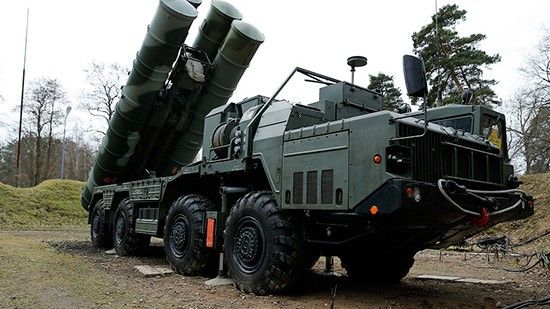Serbia and Russia Hold Joint Exercise Near Belgrade: S-400 Returns to Russia, Pantsir-S Stays

The Slavic Shield 2019 joint military exercise proves ever-tightening bonds between Serbia and Russia. It is the first time that Russia has used its flagship air-defense missile system in military drills outside the country. Moreover, a battalion of Pantsir-S will remain on Serbian soil as President Aleksandar Vucic notified about his country’s plan to purchase Russian-built military hardware.
The first stage of Slavic Shield 2019 war games took place in September in the southern Astrakhan Region. Back then, Serbian troops were taught how to operate the S-400 and Pantsir-S systems, as well as artillery and radars. The second stage of the joint Serbian-Russian exercise was held on October 23–29 in Serbia. A battalion of S-400 and a battery of Pantsir-S air defense missile systems have been deployed at the Batajnica air base in Serbia, some 25 kilometers far from Belgrade. The S-400 battalion and the Pantsir-S battery “have taken part in the drills on the territory of a foreign state for the first time,” the Russian side has informed. Teamed with Serbia’s Neva-M1T and Kub-M surface-to-air missile systems, Russian-made weaponry was used in military drills during which joined forces practiced the defense of the Batajnica air base, the city of Belgrade and a range of strategic industrial facilities.
While the S-400 will be sent back to Russia after the exercise, the Pantsir-S system is set to remain in Serbia, as the country’s government has placed an order for it. While visiting the Batajnica air base on October 25, President of Serbia Aleksandar Vucic confirmed Belgrade’s purchase, saying he was “thankful to our Russian friends for drastically boosting our defense capabilities.” In recent years, Belgrade has acquired Russian-built aircraft, helicopters, and battle tanks. This is not the only display of the ever-growing alliance between these two nations. Earlier in October, Prime Minister of Russia made a trip to Serbia while his Serbian counterpart visited Russia. While in Moscow on October 25, Serbian Prime Minister inked a free trade agreement with the Eurasian Economic Community (EAEC) in a move that Brussels sees as an impediment to Belgrade’s EU accession talks currently being underway. Under the document, 95 percent of goods from Serbia will be dispatched to EAEC states without being taxed. The accord is yet more political and upholds a rapprochement between Belgrade and Moscow. But it is the European Union that remains Serbia’s top trading partner, with bilateral trade amounting to over 60 percent of the Balkan country. Trade with Russia is less than 10 percent of Serbia’s total trade. Also, European investments in Serbia are more than ten times higher than Russia’s. A survey found that three times as many Serbs would prefer to see their country drifting closer to the European Union than to the Eurasian Economic Community.
WIDEO: Defence24 Days 2025: Premier Defence & Security Conference in CEE